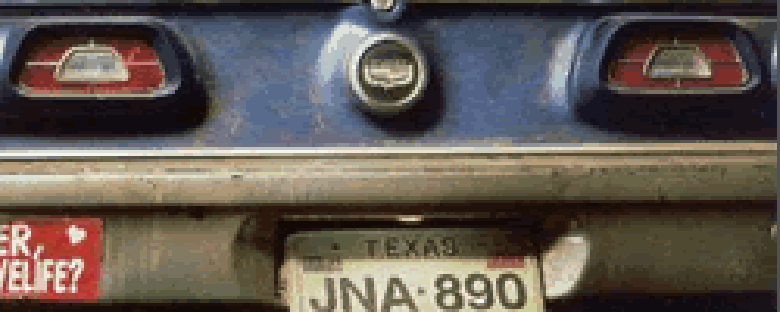Reviews
The central scene of Errol Morris’ remarkable documentary The Thin Blue Line is a reenactment of a crime that resulted in the death of a Dallas police officer in November 1976. The scene is simple enough, depicting the scenario with the few objective facts: the position of cars in a routine pullover, an unfinished milkshake, the number of bullets fired to kill the policeman. In the course of the film evidence is gathered in the testimonies of involved parties, and the scene is replayed, tainted by the addition of details: the make of the car, the actions of the surviving partner, the shape of a tail light.
The film proposes evidence and frequently reconstructs the scene with refreshed perspectives, airing it repeatedly throughout the film. There is a cause to this meticulous reconstruction, as the murder led to the conviction and death sentence of a drifter named Randal Adams. Adams’ innocence is unknown, though, as the film contends so convincingly, his conviction is buried in misrepresentation, fabrication, and an ultimate withholding of truth.
The film attains a deserved similarity to Akira Kurosawa’s Rashomon, in which a central murder is retold multiple times — each in a contrary perspective. The Thin Blue Line employs the same concept: that truth seldom affords clear perception.
The Thin Blue Line is an atypically constructed documentary with apparent production value. Foremost it has a score (courtesy composer Philip Glass), and previsualized cinematography (Morris’ website contains storyboards for the film). Furthering its genre irregularity, it employs no narration to guide the viewer, and each shot is carefully static and composed. Its central scene, even, is a fabricated element in what is largely a non-fiction film.
The film is a reassessment of facts, edited between multiple interviews of attorneys, criminal investigators, witnesses, and others involved in the case. Each speaker implies, in delivery, that his story has remained unaltered for several years (some are noticeably impatient, apparently perturbed by the case’s juvenile and hastened procedure). Adams, at the center of this conviction, has not a hint of fatigue in telling his, claiming with genuine interest his exclusion from the episode of the policeman’s death.
There is another involved in this crime, David Harris, 17 years old with a persistent criminal record. The night of the crime he had in the days prior stolen a pistol and a car. Adams, a hitchhiker without any previous criminal record, was given a ride by the teen. The night of the crime he claims to have been dropped off at his hotel by Harris, watched television, and went to bed. Both Harris’ stolen car and pistol were accessories to the crime.
There is an accusatory bias at play here (a blame given to most any non-fiction film), though Morris is not protesting Adams’ innocence, only the faulty logistics surrounding his conviction. His stance is benefited by both Adams’ and Harris’ presence in the film, between whom rests no apparent conflict. The two share in their participation Morris’ intent in the making of this film.
Speeches are often illustrated by visual accessories included in montage: newspaper clippings, mug shots, crime photography, maps. Harris speaks of the weary length of his interrogation, and Morris will exaggerate it with an image of an ashtray filled with cigarette butts. At other times simple images are particularly significant: when it is discovered that the targeted vehicle is a Comet instead of a Chevy Vega, we see contrasting close-ups of each vehicle’s tail light — each is exceedingly different, though the cars are interchangeable. The film, in its very form, is a more stable recounting of the crime, as it suggests that even the sharpest perception is partial to numerous influences.
It is not, as the previous assessment may denote, a wholly manipulative film. Morris employs multiple perspectives at once; each may be the subjective thoughts of an interviewee, though in sum form a pool of facts. In the film’s first minutes, even, a close-up of a police siren is followed by a wide overhead shot of Dallas. The image segues to a corresponding map, and closes in on another location crucial to the mystery. The film considers and pauses on every option. It is an assemblage full of contradictions, yet its breadth of contrary information founds an effective propagandistic tactic.
Morris’ final interview with Harris is the film’s extraordinary closing scene. The scene consists, simply, of changing static shots of an activated miniature tape recorder. The device airs Harris’ thoughts on Adams’ conviction, including a veiled admittance of his own guilt. At the time of this interview Harris was serving a death sentence, and gives his admission with minor hesitation. It is, nonetheless, a tense and real affirmation, that in this film invalidates the action that inspired its making.
In the year following the release of The Thin Blue Line Randal Adams was retried and exonerated. David Harris was convicted of the 1976 murder, and given an additional life sentence.
We don’t do comments anymore, but you may contact us here or find us on Twitter or Facebook.



